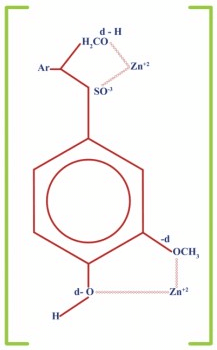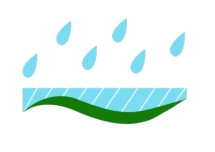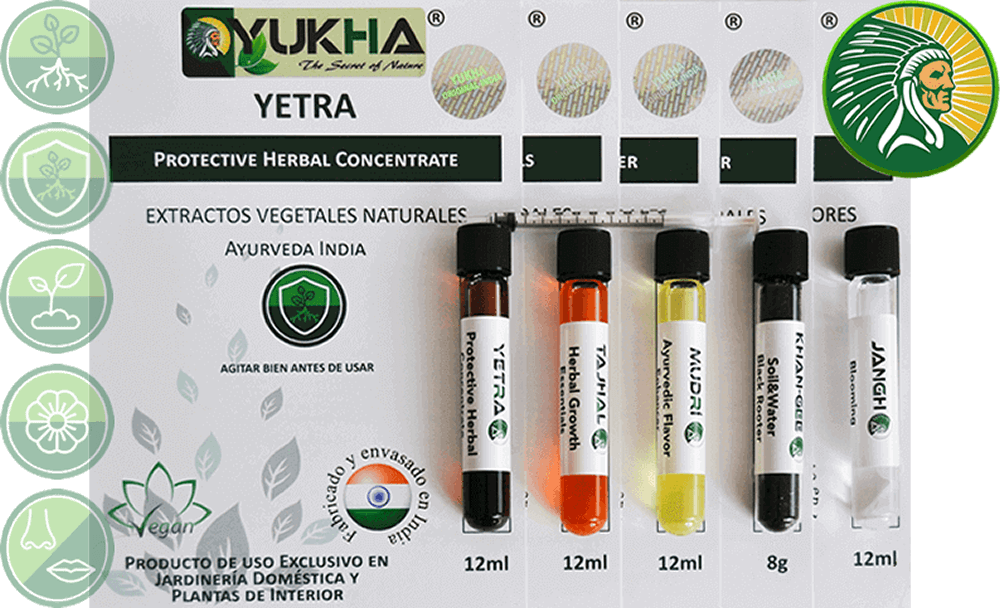- Cosimo, C.
- News and advice on hydroponics culture indoors and outdoors!
- 42 likes
- 72082 views
- 0 comments

The basic technical description of what a lignosulfonate is is as follows:
Biodegradable organic polymers of natural origin, obtained through the process of separating cellulose and lignin from wood.
In other words, they are organic compounds that are extracted from wood.
The exact structure of lignosulfonates is not known, but we can show you the chemical structure of a structural unit of one of them:

Chemical structure of a lignosulfonate for zinc.
In agriculture, the use of lignosulfonates is very broad, since these compounds are very effective complexing agents for metal ions . As we saw in the previous blog on chelated microelements, the metallic elements chemically bind to the organic structure of lignosulfonates creating stable and soluble complexes , in order to improve and optimize the effectiveness of the applications of nutritional elements in both foliar applications. as radicular. That is, as the metallic element remains wrapped within the organic structure of the lignosulfonates, apart from stabilizing them and making them soluble, the plants will better absorb the metallic elements within the lignosulfonates since these are organic molecules and the plants recognize them better. ease optimizing the process of absorption and assimilation of the same.
Lignosulfonates also have natural effects that physically help make fertilizer applications that are complexed with lignosulfonates more efficient . These effects are 3:

Wetting effect.

Adhesion effect.

Moisturizing effect.
These 3 effects are attributed to what is known in the market as adjuvants . They have no other function than to improve the physical characteristics of fertilizer applications to optimize their effectiveness.
To better understand how these physical effects act in the optimization of fertilizer applications, we are going to develop each of them:
-
Wetting effect:
Normally, when a drop falls on a surface, it remains in the form of a "bubble". Lignosulfonates break the surface tension of the water droplets, by breaking the surface tension of the water droplet, this droplet spreads along the leaf, causing more surface to be covered with the same water droplet, so It will cover the entire leaf area in foliar applications and the root and soil area in root applications.
-
Adhesion effect:
In this second effect, the lignosulfonates make the water droplets adhere to the surfaces and that they do not slip and drip, losing the applied product by dripping. In this way, all the applied product will remain on the surface of the leaves, remaining available for the plants. This effect is mostly active for foliar applications of products.
-
Moisturizing effect:
This effect of lignosulfonates in foliar applications is very interesting, as it can help us a lot to avoid burn injuries on the surface of the leaves caused by the crystallization of the salts of the fertilizers by the "magnifying glass" effect of the sun or the light. This effect consists in that the lignosulfonates take the humidity from the environment to keep the surface of the leaves moist until the absorption of the nutritional elements that are on the leaves is completed. In this way, crystals are prevented from forming on them and light from reflecting on them, avoiding burns caused by the "magnifying glass" effect of light reflection on these crystals.
With these 3 effects combined and due to the inclusion of metallic elements within the lignosulfonate, the efficiency of fertilizer applications is improved around values of 80-90% above any fertilizer that is not formulated with these lignosulfonates.
In the market it is not very common to find fertilizers marketed for use in gardening with lignosulfonates (the technical word is complexed with lignosulfonates or LS complexed ), since the usual use is more focused on professional agriculture. But now that you know what it is about, you can look for them and take advantage of the benefits of their effects on your crops.
The products in the YUKHA range, the C. Ayurveda Pack , contain lignosulfonates in their 5 products, in particular KHAN-GEE and YETRA are the ones with the highest content of this compound. According to the cultivation program defined by YUKHA for C. Ayurveda Pack, except for KHAN-GEE, all products can be applied both by foliar and by irrigation. By applying the C. Ayurveda Pack products (MUDRI, JANGH, YETRA and TAJHAL) via foliar application, these lignosulfonates present in their composition will make these foliar applications optimized due to the physical improvement of the applications (wetting, adherent and moisturizing effect) and to its rapid absorption (complexed). By using the 5 combined products of the C. Ayurveda Pack throughout the growing cycle of your plants, following the indications of the growing program, you will achieve strong, balanced plants and will enhance the final production and your yields. All this is achieved with products that have only and exclusively plant origin (C. Ayurveda Pack is a vegan product) and processed with traditional extraction methods free of chemicals and toxic substances.
Indulge yourself using an all-natural product that enhances and boosts your crops to astonishing highs with the application of YUKHA's C. Ayurveda Pack.
Cosimo, C.
![]()
Translated from the original text in Spanish by Yukha

The products in the YUKHA range, the C. Ayurveda Pack, contain lignosulfonates in their 5 products.

Comments (0)